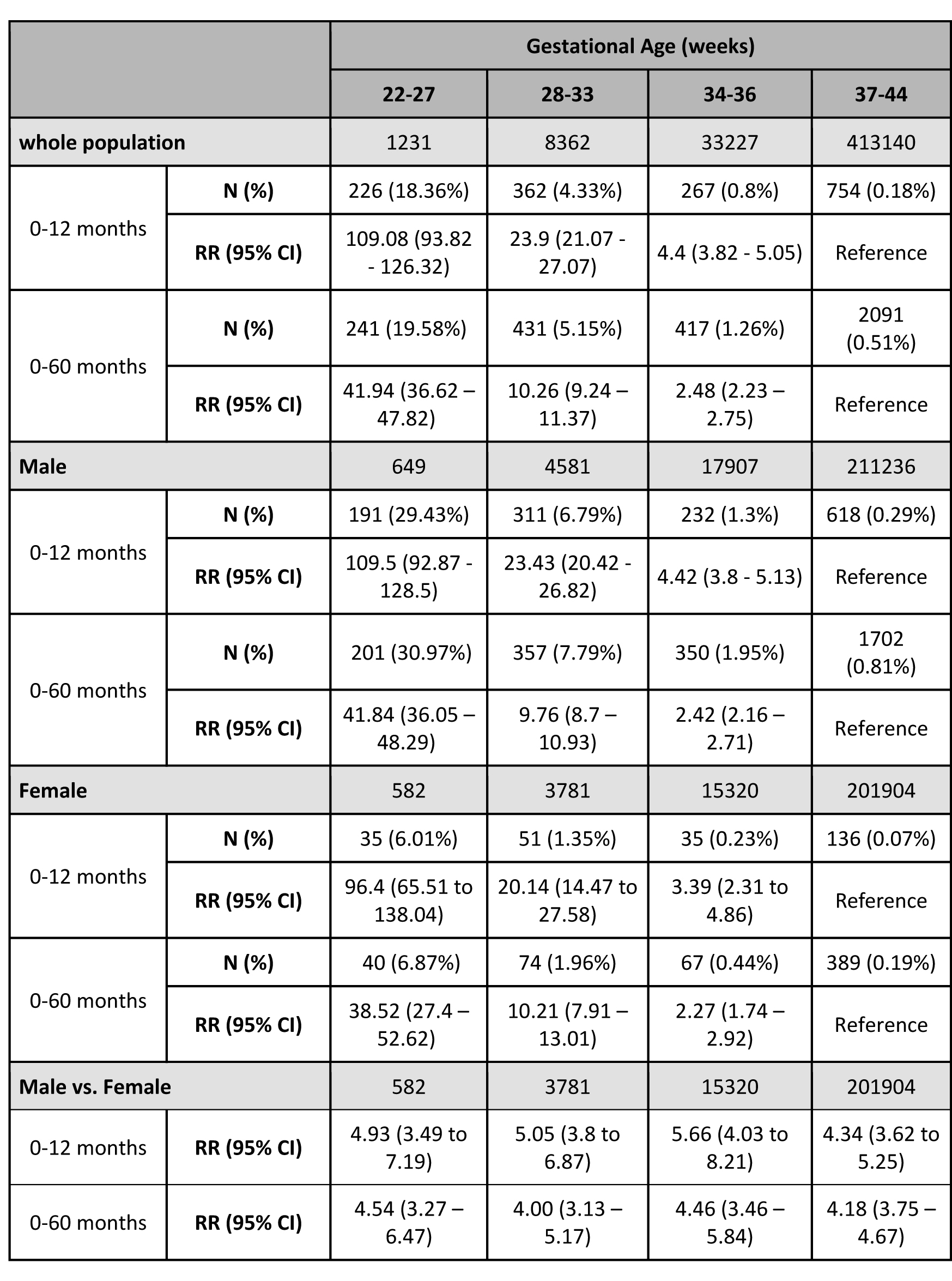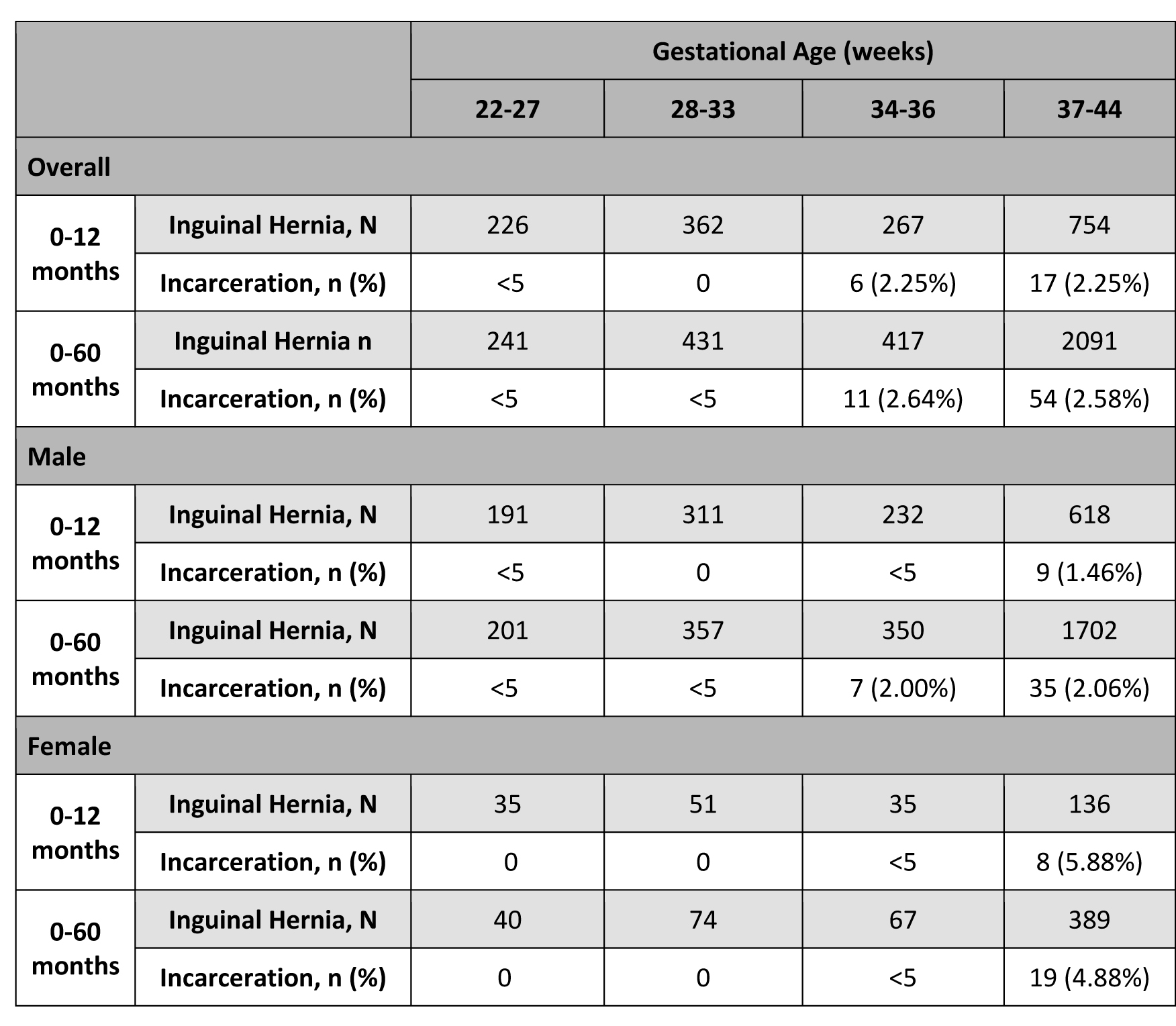Neonatology
Session: Neonatal Follow-up 2
506 - Incidence and Incarceration Risks of Inguinal Hernia Among Infants Within the First Five Years of Life: A Population-Based Analysis
Saturday, May 4, 2024
3:30 PM - 6:00 PM ET
Poster Number: 506
Publication Number: 506.1267
Publication Number: 506.1267
- MH
Matthew Sai Pong Ho, MBBS, PhD
Postdoctoral Fellow
University of Alberta Faculty of Medicine and Dentistry
Edmonton, Alberta, Canada
Presenting Author(s)
Background: Inguinal hernia is common in preterm neonates. However, there is limited literature providing comprehensive epidemiological data on inguinal hernias, and their associated complications, during and beyond the newborn periods. These issues have not been explored in previous large-scale population studies.
Objective: To examine the incidence rates of inguinal and incarcerated hernias in preterm and term infants during the first five years of life.
Design/Methods: Data of infants born between 2004 and 2014 in British Columbia, with subsequent follow-up until Dec 2019, were extracted from three provincial databases: perinatal records, hospitalizations, and outpatient services. Infants were categorized based on their gestational age (GA) into four groups: 22-27 weeks, 28-33 weeks, 34-36 weeks, and 37-44 weeks. Rate ratios (RR) for the incidence of inguinal hernias in both male and female infants within each GA group were ascertained during one-year and five-year follow-up periods and compared to the reference group (GA 37-44 weeks) utilizing Poisson regression analysis.
Results: There were 455,960 neonates included in the study, and 3,180 were diagnosed with inguinal hernia over a five-year follow-up period. Compared to neonates born at 37-44 weeks GA, those born preterm had higher rates of inguinal hernia, with relative risks ranging from 2.5 to 42.0. Male neonates had higher incidence in all GA categories. Lower GA was correlated with higher rates of inguinal hernia, the majority of which developed within the first year of life [Table 1]. Incarceration was observed mainly in children born at 37-44 weeks GA, especially among females [Table 2].
Conclusion(s): Preterm birth and male sex were associated with increased risk for inguinal hernia. Most hernias occurred within the first year of life. Female infants born at term had the lowest incidence of hernia, however, they had the highest rates of hernia incarceration.


